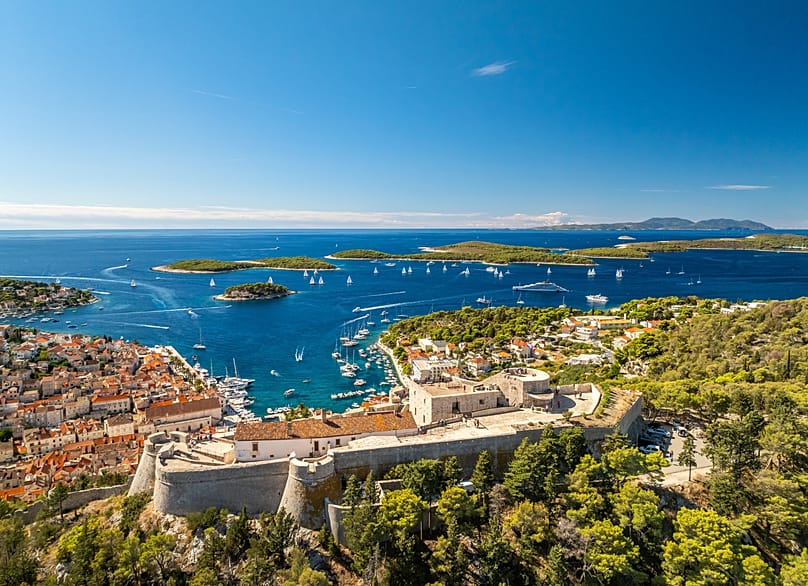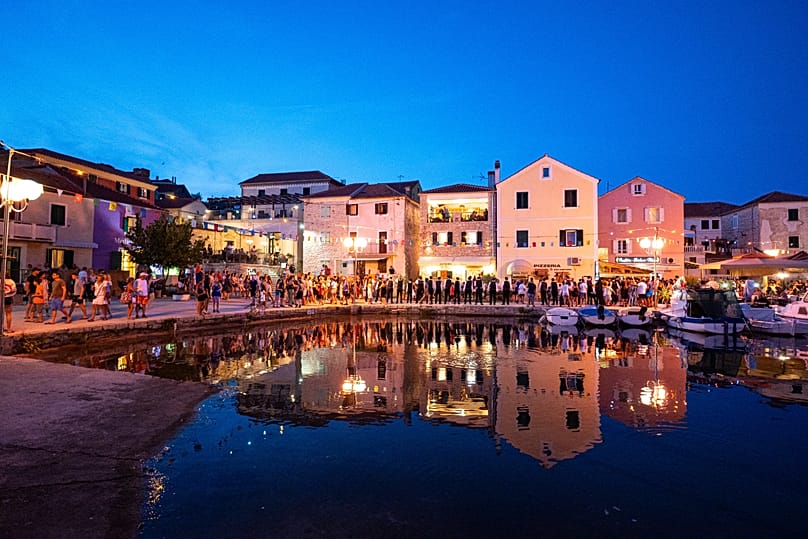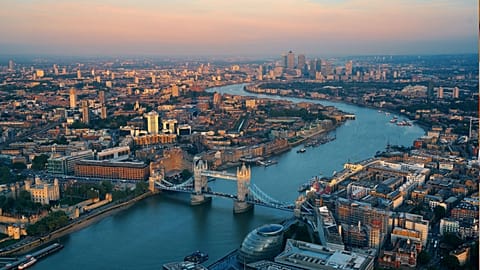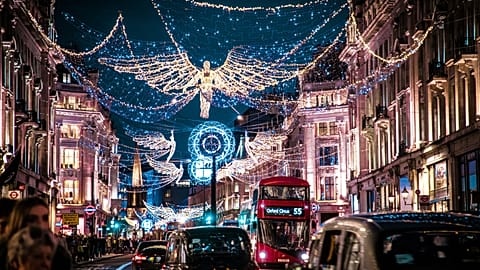At the World Travel Market in London, Bisera Fabrio from the Croatian National Tourist Board described a country defined by warmth, authenticity and a “genuine Mediterranean spirit”.
From its medieval cities to its more than 1,200 sun-drenched islands, Croatia has long been known as one of Europe’s most photogenic destinations.
But beneath the postcard scenery lies something deeper - a way of life defined by warmth, authenticity and a quiet confidence that’s all its own.
“Visitors often say they feel like friends rather than tourists,” says Bisera Fabrio, director of the UK Representative Office for the Croatian National Tourist Board, speaking to Euronews Travel at the World Travel Market in London. “There’s an authenticity and hospitality that still exists here - a genuine Mediterranean spirit.”
That spirit is summed up by one word Croatians live by: 'pomalo' - essentially meaning "take it easy" or "slowly". It’s a mindset that captures the country’s unhurried rhythm and love for simple pleasures.
“You’ll see it everywhere,” Fabrio explains. “People sitting at cafés, drinking coffee slowly, watching the world go by. We even have a saying: ‘The best coffee is the one that starts hot and ends cold.’ It means you’ve been sitting for a long time, just enjoying the moment.”
Beyond Dubrovnik: Discovering Croatia’s hidden corners
While the ancient walled city of Dubrovnik remains Croatia’s most recognisable symbol (and one which served as the backdrop for King's Landing in the popular Game of Thrones TV series), the country’s tourism strategy now focuses on spreading visitors across its diverse regions.
“They recognised early that overcrowding was a serious issue and made bold, long-term decisions,” Fabrio says of Dubrovnik’s success in tackling overtourism. “They limited traffic in the old city, reduced cruise ship arrivals and introduced timed entries for major sites.”
The effort has paid off - Dubrovnik just received a 2025 Wanderlust Award for its sustainability measures - and now serves as a model for other historic cities in Europe.
But Croatia’s real charm, Fabrio insists, lies in its contrasts. “Zadar, for example, is like a ‘mini Croatia’ - it has everything: national parks, rivers, islands, lakes and cultural heritage. Then there’s Šibenik, a smaller city with a lovely waterfront and the Krka waterfalls nearby.”
Heading inland, Slavonia reveals a completely different face of the country - all golden plains, vineyards and hearty, spiced cuisine - while Lika offers dense forests, hiking trails and wildlife encounters near the famous Plitvice Lakes.
“We’re seeing more visitors staying longer, which allows them to explore these hidden sides of the country,” Fabrio notes.
Balancing growth with sustainability
Croatia’s tourism story isn’t just about attracting more visitors - it’s about shaping a smarter, greener industry.
“Sustainability is a core part of our strategy,” says Fabrio. “Croatia was one of the first European countries to introduce sustainability into its tourism laws. Today, there is no tourism without sustainability.”
Many hotels now run on solar power, while electric vehicles and waste-reduction standards have become the norm. To earn four or five star status, hotels must meet strict environmental criteria covering energy use, waste and noise.
Even nightlife destinations are evolving. On Hvar Island, once famed for its all-night parties, new regulations have restored a sense of calm.
“It was a challenging step, but it worked,” Fabrio explains. “Now visitors can still enjoy nightlife, but residents and other guests can rest peacefully.”
Festivals and flavours
Every Croatian city celebrates its patron saint with festivals brimming with music, food and tradition - from Dubrovnik’s February festivities to Split’s May celebrations. In winter, Zagreb turns into a winter fairytale at Advent, and its Christmas market has been voted as Europe’s best eight years running.
The food scene is equally vibrant.
“We now have around 13 Michelin-starred restaurants,” says Fabrio. “But even in small towns, you’ll find incredible dishes made with 100 per cent Croatian ingredients.”
Cuisine shifts dramatically from north to south - meat and beer inland, seafood and wine along the coast. One must-try dish is pašticada, a slow-cooked veal stew marinated for days in plum sauce.
“Every family has its own recipe,” Fabrio says. “It’s best enjoyed slowly, in true pomalo style.”
A country that feels like home
Beyond its scenery and gastronomy, what keeps visitors coming back is Croatia’s atmosphere of ease and safety.
“Croatia is one of the safest countries in Europe,” Fabrio says. “Families feel comfortable letting their children play freely. Dubrovnik was named the safest city in Europe, and Croatia overall was named the safest country to walk alone at 2AM.”
It’s a place where community still matters and where visitors are invited to live - at least for a while - the Croatian way.
But once you’ve experienced the true meaning of pomalo, it will be hard to rush back to anything else.



